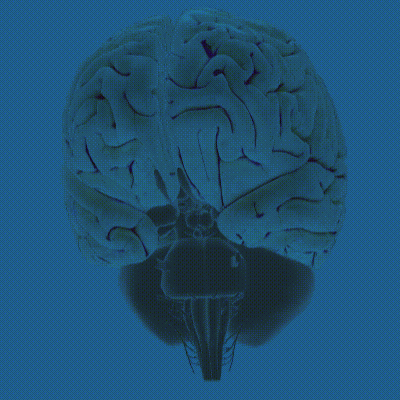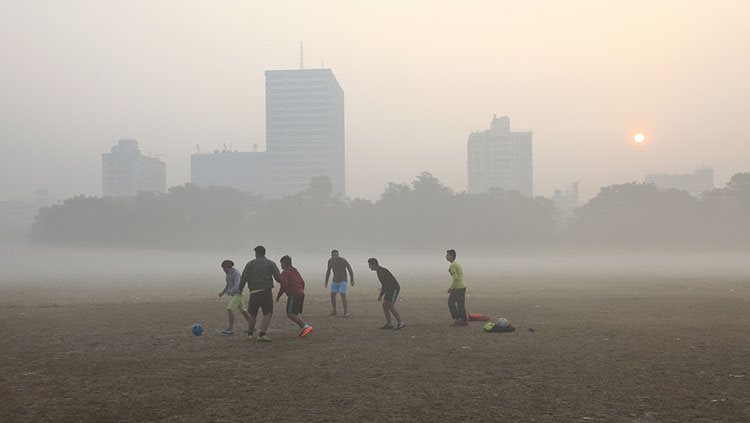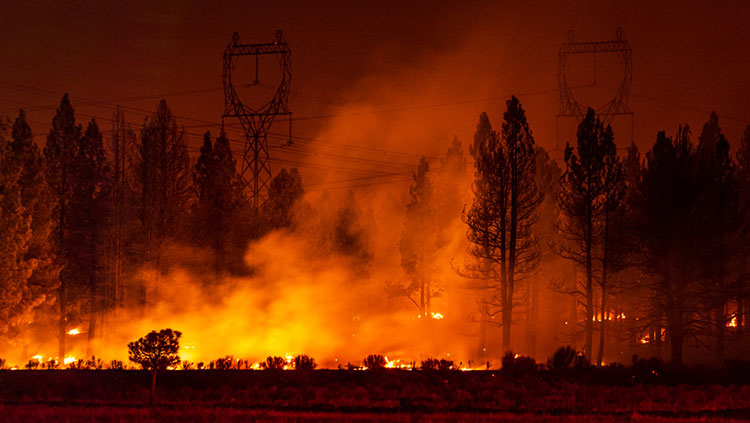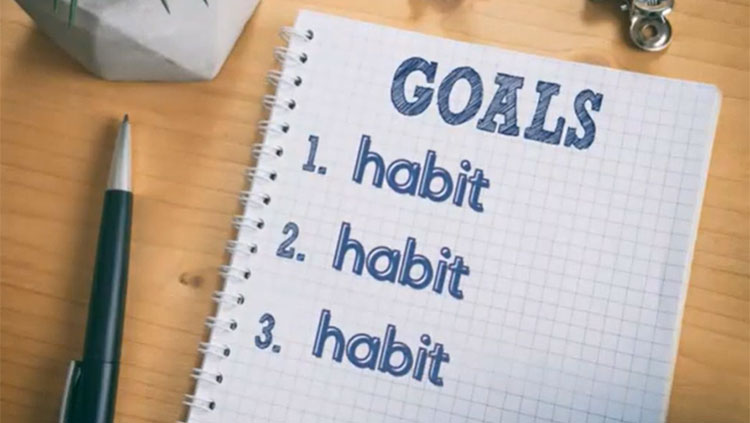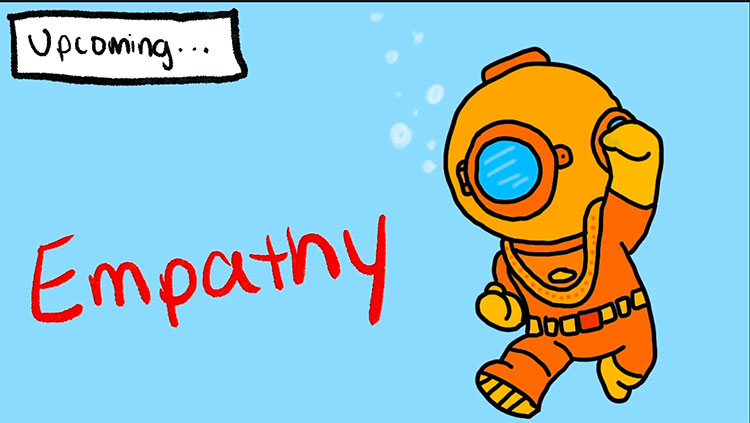How Natural Spaces Nurture the Brain
- Published23 May 2024
- Author Mollie McGurk
- Source BrainFacts/SfN
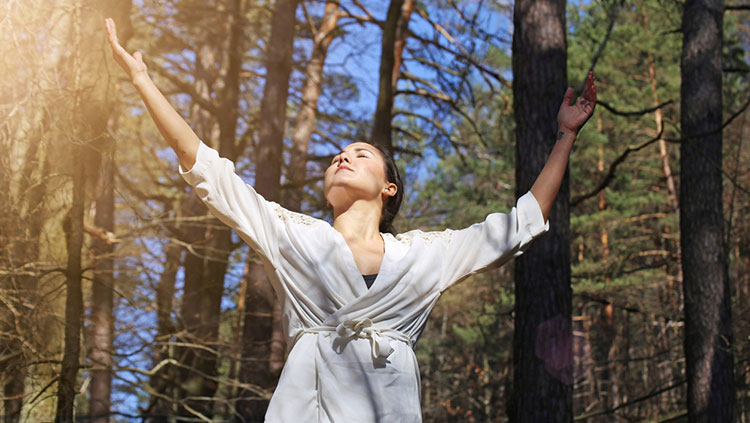
Treetops sway gently overhead, sunlight dancing between lush foliage. A soft breeze caresses your face as you breathe deeply. You are enjoying Shinrin-yoku, or a “forest bath.” The brainchild of the Japanese Ministry of Forestry, forest bathing began as part of a 1982 campaign to get people back to nature. The practice harkens to nature-based healing tradition spanning centuries and across cultures. Now, scientists are exploring just how nature nurtures our brains.
Exposure to green spaces, like forests, parks, and grasslands, and to blue spaces, including rivers, oceans, seas, and lakes, is associated with reductions in anxiety and depression and improvements to overall well-being, as documented by an 18-country survey conducted and funded by the European Union’s Horizon 2020 research and innovation program.
“The most consistent finding internationally is that spending recreational time in safe, natural spaces helps to reduce negative emotions and induce positive ones,” explains lead author and environmental psychologist Mathew White. Using the World Health Organization’s 5-item well-being index (WHO-5) and other indicators such as anti-anxiety and anti-depressant prescriptions, White’s team, as part of the BlueHealth Initiative, compared overall well-being to green and blue space exposure. “That has all sorts of positive spin-offs like [reducing] rumination,” the negative and repetitive thought loops characteristic of stress and other mental disorders.
“Depression, anxiety, anger, confusion, and fatigue are all psychological states that have benefited from green and blue space,” says forensic psychiatrist Melissa Piasecki. She explains while the Profile of Mood States (POMS), which White’s BlueHealth Initiative survey deployed, records subjective accounts, scientific advances provide new ways to objectively measure what’s happening in the brain. “We now have windows to gain insight into the psychological benefits of nature. We have biomarkers.”
By identifying molecules or substances that signal conditions in the body, researchers can measure things like the levels of the feel-good neurotransmitter serotonin to evaluate depression or the stress hormone cortisol to quantify feelings of anxiety.
Participants in studies on Shinrin-yoku regularly report alleviated symptoms of depression and anxiety. When researchers looked at these two biomarkers, they confirmed elevated levels of serotonin and decreased levels of cortisol after spending time in the forest.
Imaging technology offers insight into brain activity underpinning thought processes like rumination. Using a method called arterial spin labeling (ASL), researchers discovered decreased neural activity in the subgenual prefrontal cortex, the area of the brain associated with emotional regulation. This coincides with participants’ reports of less negative thinking after a nature walk. Using functional magnetic resonance imaging (fMRI) researchers found decreased activity in the amygdala, the region associated with feelings of fear. Evidence even suggests simply viewing images of greenery activates our parasympathetic nervous system, known as our “rest and digest” mode.
Reset to Default Mode
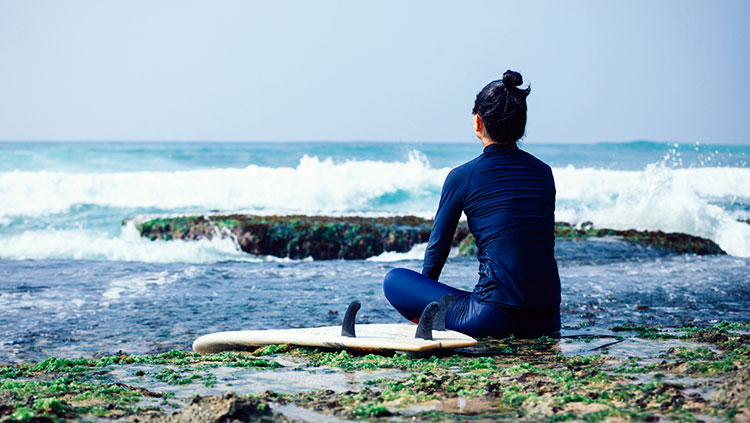
Most studies on nature and brain health focus on green spaces, but this is changing. In the same way forest bathing engages all our senses, being near water triggers an almost meditative state. “Blue spaces tend to be more visually and aurally dynamic, constantly changing which captures the attention and reduces thinking about other things,” explains White.
Unlike in the forest, bathing in blue spaces takes on a more literal meaning. “Findings point to the health benefits from immersion in the sea and surf and how ocean therapy activities can act as a tool to experience this sensory world more directly,” says social ecologist Easkey Britton, who worked on a project called SOPHIE – Seas, Oceans & Public Health in Europe – also funded by the EU’s Horizon 2020 program.
Blue spaces tend to inspire more physical activity, which adds brain benefits. Exercise triggers many processes that boost brain power and improve mental health. The sensory experience of water-based exercise like swimming and surfing may amplify these positive effects. “There is strong evidence to support the health benefits of surf therapy, especially for emotional and psychological wellbeing … Feelings of presence, flow, and a connection to nature were often reported by participants across various surf therapy studies,” Britton explains.
Some research suggests we benefit most where green meets blue like coastlines or inland lakes, though Piasecki points out all natural landscapes hold intrinsic value. “There’s an emergent area of research on the benefits of awe. When you’re in desert environments, like Arches National Park, you see these massive rocks and these incredible vistas,” she explains.
“It evokes what is called ‘soft fascination,’ moments when you are mentally engaged in what is going on, but without the need to focus or act, like watching the colors shift during a sunset. The mind is both openly aware and effortlessly absorbed in the moment,” Britton says.
One long-term study using MRI scans showed more time outdoors increased volume in the right dorsolateral prefrontal cortex, the area involved in working memory, planning, and decision-making. These findings are especially relevant in our modern tech-centric world.
“We’re getting into trouble as a society. There’s no good news here about mental health,” says Piasecki, citing the negative effects of screen time. “What I am most excited about in nature research is how can we stimulate that softer receptivity and reset the brain with default mode,” says Piasecki, who hopes research becomes more interventional by turning nature therapy into evidence-based medicine.
CONTENT PROVIDED BY
BrainFacts/SfN
References
Bratman, G. N., Hamilton, J. P., Hahn, K. S., Daily, G. C., & Gross, J. J. (2015). Nature experience reduces rumination and subgenual prefrontal cortex activation. Proceedings of the National Academy of Sciences (PNAS), 112 (28). https://www.pnas.org/doi/10.1073/pnas.1510459112
Britton, E. & Foley, R. (2020). Sensing Water: Uncovering Health and Well-Being in the Sea and Surf. Journal of Sport and Social Issues, 45 (1). https://journals.sagepub.com/doi/full/10.1177/0193723520928597
Hopman, R. J., Atchley, R. A., Atchley, P., & Strayer, D. L. (2021). How nature helps replenish our depleted cognitive reserves and improves mood by increasing activation of the brain’s default mode network. In S. M. Lane & P. Atchley (Eds.), Human capacity in the attention economy (pp. 159–187). American Psychological Association. https://psycnet.apa.org/record/2020-63917-008
Jo, H., Song, C., & Miyazaki, Y. (2019). Physiological Benefits of Viewing Nature: A Systematic Review of Indoor Experiments. International Journal of Environmental Research and Public Health, 16 (23). https://www.ncbi.nlm.nih.gov/pmc/articles/PMC6926748/
Kühn, S., Mascherek, A., Filevich, E., Lisofsky, N., Becker, M., Butler, O., Lochstet, M., Mårtensson, J., Wenger, E., Lindenberger, U. & Gallinat, J. (2021). Spend time outdoors for your brain – an in-depth longitudinal MRI study. The World Journal of Biological Psychiatry, 23 (2). https://www.tandfonline.com/doi/full/10.1080/15622975.2021.1938670?scroll=top&needAccess=true
Li, Q., Ochiai, H., Ochiai, T., Takayama, N., Kumeda, S., Miura, T., Aoyagi, Y., & Imai, M. (2022). Effects of forest bathing (shinrin-yoku) on serotonin inserum, depressive symptoms and subjective sleep quality in middle-aged males. Environmental Health and Preventative Medicine, 27 (44). https://pubmed.ncbi.nlm.nih.gov/36328588/
Muppalla, S. K., Vuppalapati, S., Pulliahgaru, A. R. & Sreenivasulu, H. (2023). Effects of Excessive Screen Time on Child Development: An Updated Review and Strategies for Management. Cureus, 15 (6). https://www.ncbi.nlm.nih.gov/pmc/articles/PMC10353947/#:~:text=However%2C%20studies%20have%20shown%20that,academic%20performance%20in%20later%20years.
Park, B. J., Tsunetsugu, Y., Kasetani, T., Kagawa, T., & Miyazaki, Y. (2010). The physiological effects of Shinrin-yoku (taking in the forest atmosphere or forest bathing): evidence from field experiments in 24 forests across Japan. Environmental Health and Preventative Medicine, 15 (1). https://www.ncbi.nlm.nih.gov/pmc/articles/PMC2793346/
Sudimac, S., Sale, V., & Kühn, S. (2022). How nature nurtures: Amygdala activity decreases as the result of a one-hour walk in nature. Molecular Psychiatry, 27. https://www.nature.com/articles/s41380-022-01720-6
White, M. P., Alcock, I., Wheeler, B. W., & Depledge, M. H. (2013). Coastal proximity, health and well-being: results from a longitudinal panel survey. Health & Place, 23. https://www.sciencedirect.com/science/article/abs/pii/S1353829213000816?via%3Dihub
White, M. P., Elliott, L. R., Grellier, J., Economou, T., Bell, S., Bratman, G. N., Cirach, M., Gascon, M., Lima, M. L., Lõhmus, M., Nieuwenhuijsen, M., Ojala, A., Roiko, A., Schultz, P. W., Bosch, M. v. d. & Fleming, L. E. (2021). Associations between green/blue spaces and mental health across 18 countries. Scientific Reports, 11. https://www.nature.com/articles/s41598-021-87675-0
White, M. P., Wheeler, B. W., Herbert, S., Alcock, I., Depledge, M. H. (2014). Coastal proximity and physical activity: Is the coast an under-appreciated public health resource? Preventive Medicine, 69 (135). https://www.sciencedirect.com/science/article/abs/pii/S0091743514003582?via%3Dihub
What to Read Next
Also In Diet & Lifestyle
Trending
Popular articles on BrainFacts.org


